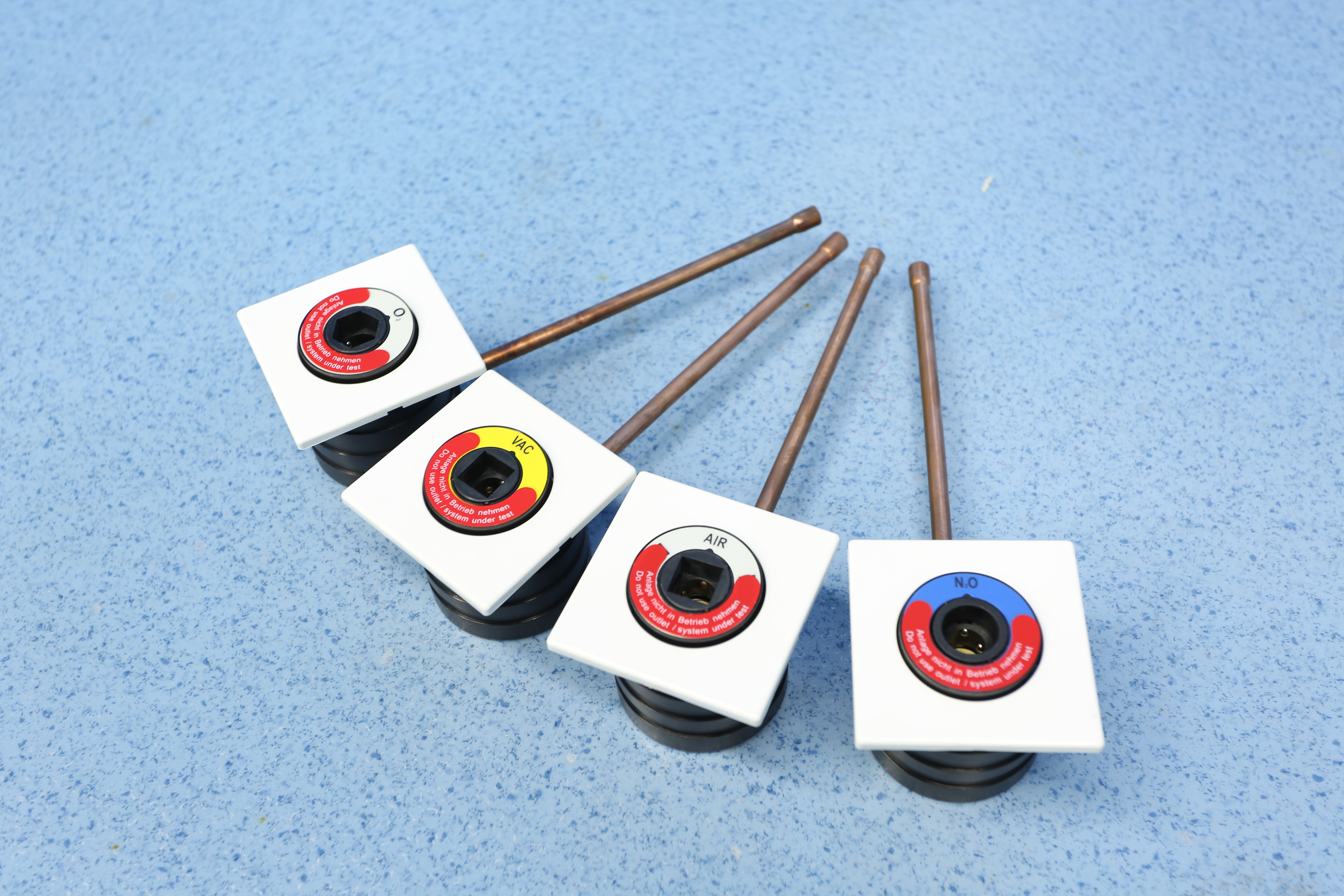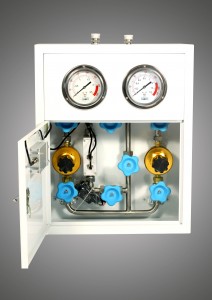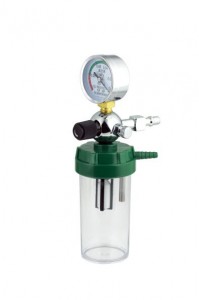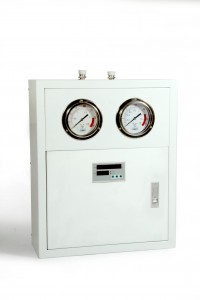Medical gas refers to the gas used in medical treatment. Some are used directly for treatment; some are used for anesthesia; some are used to drive medical equipment and tools; some are used for medical experiments and bacteria and embryo culture. Commonly used are oxygen, nitrous oxide, carbon dioxide, argon, helium, nitrogen and compressed air.
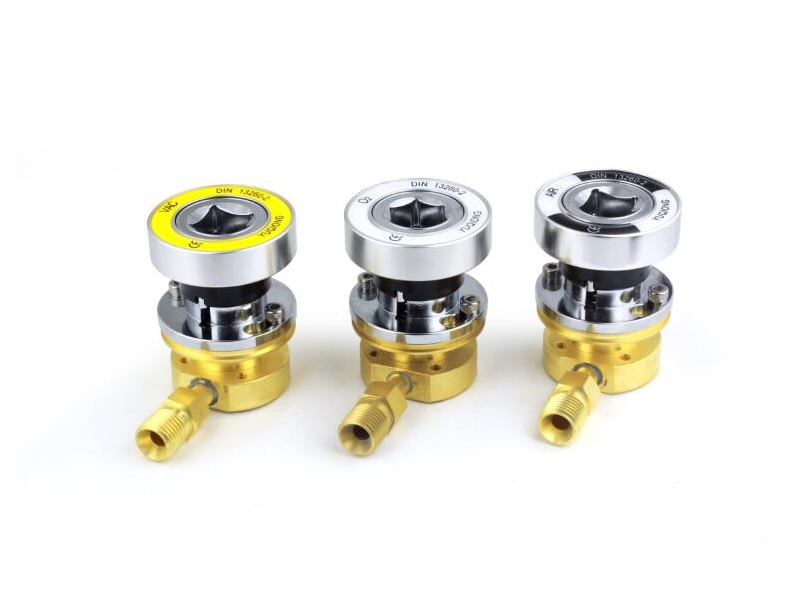
The nature and use of medical gas:
1. Oxygen (Oxygen) The molecular formula of oxygen is O2. It is a strong oxidizer and combustion enhancer. When high concentration oxygen encounters grease, it will have a strong oxidation reaction, produce high temperature, and even burn and explode. Therefore, it is listed as a Class B fire hazard substance in the “Code for Fire Protection Design of Buildings”.
However, oxygen is also the most basic substance to sustain life, and it is medically used to supplement oxygen for hypoxic patients. Direct inhalation of high-purity oxygen is harmful to the human body, and the oxygen concentration for long-term use generally does not exceed 30-40%. Ordinary patients inhale oxygen through humidifying bottles; critically ill patients inhale oxygen through ventilator. Oxygen is also used in high-pressure chambers to treat diving sickness, gas poisoning, and to atomize medicines.
The molecular formula of nitrous oxide is N2O. It is a colorless, good-smelling, and sweet-smelling gas. After a small amount of inhalation, facial muscles will spasm and the expression of laughter will appear, so it is commonly known as laughing gas (laugh-gas).
Nitrous oxide is inactive and non-corrosive at room temperature; however, it will oxidize aluminum, steel, copper alloy and other metals when heated; it will corrode polypropylene above 60°C.
Nitrous oxide will decompose into nitrogen and oxygen when the temperature exceeds 650℃, so it has a combustion-supporting effect. At high temperatures, pressures above 15 atmospheres will cause grease to burn.
Laughing gas is slightly soluble in water, easily soluble in acetone, methanol and ethanol, and can be neutralized and absorbed by alkaline solutions such as high-chlorine bleaching powder and soda ash.
After a small amount of nitrous oxide is inhaled, it has anesthesia and analgesic effect, but a large amount of inhalation can cause suffocation. Medically, a mixture of nitrous oxide and oxygen (mixing ratio: 65% N2O + 35% O2) is used as anesthetic, and it is inhaled to the patient through a closed method or a ventilator. During anesthesia, use accurate oxygen and nitrous oxide flow meters to monitor the mixing ratio of the two to prevent the patient from asphyxiating. When stopping breathing, the patient must be given oxygen for more than 10 minutes to prevent hypoxia.
Using nitrous oxide as an anesthetic has the advantages of short induction period, good analgesic effect, quick recovery, and no adverse effects on breathing, liver and kidney functions. But it has a slight inhibitory effect on the myocardium, muscle relaxation is not complete, and general anesthesia is weak. Nitrous oxide alone as an anesthetic is only suitable for minor operations such as tooth extraction, fracture restoration, abscess incision, surgical suture, artificial abortion, and painless delivery. In major operations, it is often used in combination with barbiturates, succinylcholine, opiates, cyclopropane, ether, etc. to enhance the effect.
Laughing gas is also used as a refrigerant, leak detection agent, cream foaming agent, food protectant, combustion-supporting agent, etc.
3. Carbon dioxide
The molecular formula of carbon dioxide is CO2, commonly known as carbon dioxide. It is a colorless, sour, and low-toxic gas. It is inactive at room temperature, soluble in water, and its solubility is 0.144g/100g water (25℃). At 20°C, carbon dioxide can become a colorless liquid by pressurizing it to 5.73×106 Pa, which is often compressed and stored in a cylinder. Carbon dioxide can be made into dry ice by pressurizing (5.27×105Pa) and cooling (below -56.6℃). Dry ice can be directly sublimated into gas at 1.013×105 Pa (atmospheric pressure) and -78.5°C. When the liquid carbon dioxide is rapidly evaporated under reduced pressure, part of the gasification heat absorption makes the other part quenched into a snow-like solid, which compresses the snow-like solid into an ice-like solid (dry ice).
The safe limit of carbon dioxide content in the air is 0.5%. If it exceeds 3%, it will affect the body. If it exceeds 7%, it will cause a coma. If it exceeds 20%, it will cause death.
Medically, carbon dioxide is used to inflate the abdominal cavity and colon for laparoscopy and fiber colonoscopy. In addition, it is also used to cultivate bacteria (anaerobic bacteria) in the laboratory. High-pressure carbon dioxide can also be used in cryotherapy to treat cataracts and vascular diseases.
Carbon dioxide is a non-combustible, non-combustible, and heavier than air (density 1.977g/L under standard conditions, which is about 1.5 times that of air), which can cover the surface of objects and isolate the air, so it is often used Fire extinguishing, used for carbon dioxide shielded welding (used to isolate oxygen), etc. Dry ice can be used as refrigerant, sterilization mixture, and used for artificial rainfall.
4. Argon
The molecular formula of argon is Ar. It is a colorless, odorless and non-toxic inert gas. It is non-flammable, non-combustible, and does not chemically react with other substances, so it can be used to protect metals from oxidation.
The argon gas is ionized into argon gas ions under the action of high frequency and high pressure. This argon gas ion has excellent conductivity and can continuously transmit current. The argon gas itself can lower the temperature of the wound during the operation, and reduce the oxidation and carbonization (smoke, eschar) of the damaged tissue. Therefore, it is often used for high frequency in medical treatment.
Surgical instruments such as argon knife.
Argon is also used in argon shielded welding, fluorescent lamps, integrated circuit manufacturing, etc.
5. Helium (helium)
The molecular formula of helium is He. It is also a colorless, odorless and non-toxic inert gas. It is non-flammable, non-combustible, and does not chemically react with other substances, so it can be used to protect metals from oxidation. Medically, it is often used in surgical instruments such as high-frequency helium knives.
6. Nitrogen
The molecular formula of nitrogen is N2. It is a colorless, odorless, non-toxic, non-combustible gas. It is inactive at room temperature and does not react chemically with common metals. Therefore, pure nitrogen is often used for metal anti-corrosion, such as filling bulbs, anti-rust and air-filled storage of objects, preservation, welding protection, gas replacement, etc. It is also used to synthesize ammonia, manufacture nitric acid, explosives, nitrogen fertilizers, etc., and has a wide range of uses.
Medically used to drive medical equipment and tools.
Liquid nitrogen is often used in cryotherapy in surgery, stomatology, gynecology, and ophthalmology to treat hemangioma, skin cancer, acne, hemorrhoids, rectal cancer, various polyps, cataracts, glaucoma, and artificial insemination.
7. Compressed air (air)
Compressed air is used to transmit power for oral surgical instruments, orthopedic instruments, ventilators, etc.
In addition to the above 7 commonly used gases, there are also some special-purpose medical gases:
8. Medical hernia
The medical xenon gas is mainly used in the gas tube CT machine. The xenon gas stimulates ionization by absorbing energy, and its ions accelerate in the electric field and hit the metal plate to generate X-rays. Because the absorption and transmittance of X-rays by human tissues are different, it passes The computer processes the data of the human body after the X-rays are irradiated, and then a cross-sectional or three-dimensional image of the body to be inspected can be captured.
9. Krypton
It is mainly used as auxiliary material for laser source excitation in hospitals to increase the intensity of the original laser source, so as to achieve more accurate diagnosis and treatment of diseases by clinicians.
10. Neon
It is mainly used in the cleaning and replacement gas of laser surgery machines commonly used in hospitals. The specific requirements are determined by different laser surgery models in the hospital.
11. Mixed gas
▲N2+CO2 or CO2+H2
It is mainly used for anaerobic bacteria culture in hospitals, which serves the purpose of culturing bacteria required by nutrition, facilitates the detection of bacteria types, and meets the requirements of identifying bacteria, which is conducive to clinical diagnosis and treatment.
▲5-10%CO2/Air
Used in the cerebral circulatory system, the purpose is to promote and accelerate the advancement of the blood circulation of the cerebral circulation, and to maintain the stability of the cerebral circulation.
▲Medical ternary mixed gas
It is mainly used for cell culture and embryo culture. It is a commonly used gas in hospital reproductive centers and other parts.
12. Blood determination auxiliary gas
It is mainly used to protect the separation and stability of blood components during blood measurement, so as to accurately calculate the quantity of each component, such as red blood cells, white blood cells, etc.
13, lung diffuse gas
It is mainly used for lung surgery to expand the volume, facilitating the operation and preventing lung atrophy from becoming smaller.
14. Disinfection and sterilization gas
15. Excimer laser gas
16. Discharge and treatment of exhaust gas and waste liquid
Waste liquid
The liquid waste produced in the treatment includes sputum, pus and blood, ascites, washing sewage, etc., which can be collected and processed by a vacuum suction system.
Anesthetic waste gas
Generally refers to the mixed exhaust gas exhaled by the patient during anesthesia. Its main components are nitrous oxide, carbon dioxide, air, enflurane, sevoflurane, isoflurane and other ether gases.
Anesthetic waste gas is harmful to medical staff. At the same time, the low-acid components in the exhaust gas have a corrosive effect on the equipment, so the anesthetic exhaust gas exhaled by the patient
It should be collected, processed or diluted by the Anesthetic Gas Scavenging System and discharged outside the building.
At present, the commonly used treatment method is to absorb the anesthetic waste gas with activated carbon and then burn it.
Post time: Nov-16-2021


